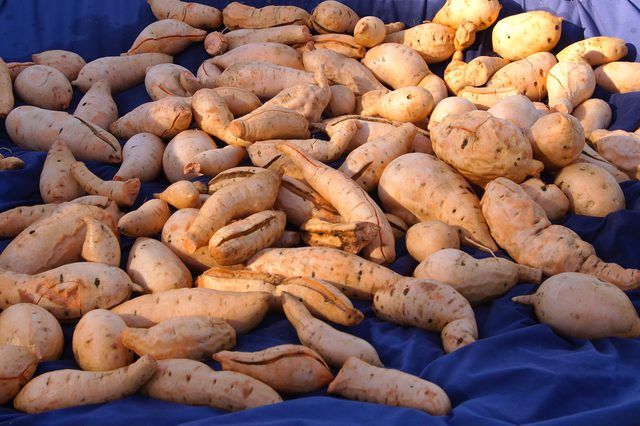Bulbs
Flower Basics
Flower Beds & Specialty Gardens
Flower Garden
Garden Furniture
Garden Gnomes
Garden Seeds
Garden Sheds
Garden Statues
Garden Tools & Supplies
Gardening Basics
Green & Organic
Groundcovers & Vines
Growing Annuals
Growing Basil
Growing Beans
Growing Berries
Growing Blueberries
Growing Cactus
Growing Corn
Growing Cotton
Growing Edibles
Growing Flowers
Growing Garlic
Growing Grapes
Growing Grass
Growing Herbs
Growing Jasmine
Growing Mint
Growing Mushrooms
Orchids
Growing Peanuts
Growing Perennials
Growing Plants
Growing Rosemary
Growing Roses
Growing Strawberries
Growing Sunflowers
Growing Thyme
Growing Tomatoes
Growing Tulips
Growing Vegetables
Herb Basics
Herb Garden
Indoor Growing
Landscaping Basics
Landscaping Patios
Landscaping Plants
Landscaping Shrubs
Landscaping Trees
Landscaping Walks & Pathways
Lawn Basics
Lawn Maintenance
Lawn Mowers
Lawn Ornaments
Lawn Planting
Lawn Tools
Outdoor Growing
Overall Landscape Planning
Pests, Weeds & Problems
Plant Basics
Rock Garden
Rose Garden
Shrubs
Soil
Specialty Gardens
Trees
Vegetable Garden
Yard Maintenance
How to Grow Sweet Potatoes
How to Grow Sweet Potatoes. Sweet potatoes (Ipomoea batatas) are native to Central and South America, but they’re also grown commercially in southern states such as North Carolina. Perennial in U.S. Department of Agriculture plant hardiness zones 9 through 11, these warm-weather vegetables need a long, frost-free growing season. If you live...
Sweet potatoes (Ipomoea batatas) are native to Central and South America, but they’re also grown commercially in southern states such as North Carolina. Perennial in U.S. Department of Agriculture plant hardiness zones 9 through 11, these warm-weather vegetables need a long, frost-free growing season. If you live in a cooler climate, however, you can still grow sweet potatoes by planting your slips or starts farther apart and choosing short-season varieties that mature in as few as 90 days.
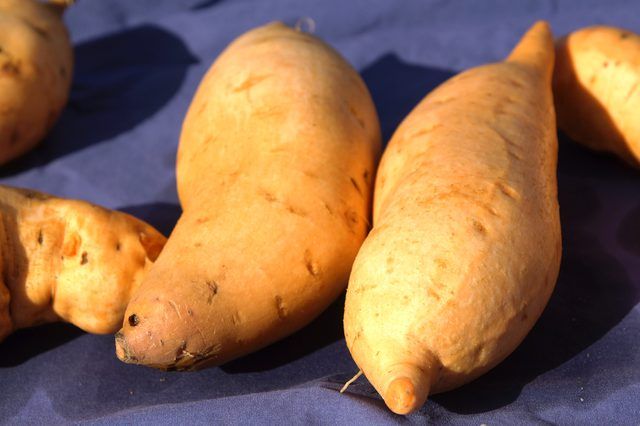
Sweet potatoes are not grown from seed, but slips, which are propagated from the root. You can buy the slips from a nursery or grow your own from an organically grown root. To grow slips, place one or more sweet potato roots at least 1 inch apart in a hotbed, which is basically a mini greenhouse that's heated from the bottom. Cover the roots with about 2 inches of sand. After the shoots poke through the surface, cover the roots with another inch of sand. Keep the sand moist but not completely saturated, and maintain the temperature of the sand at between 70 and 80 degrees Fahrenheit. After about six weeks, the slips should be 6 to 8 inches tall and are ready to be pulled off the main root and planted.
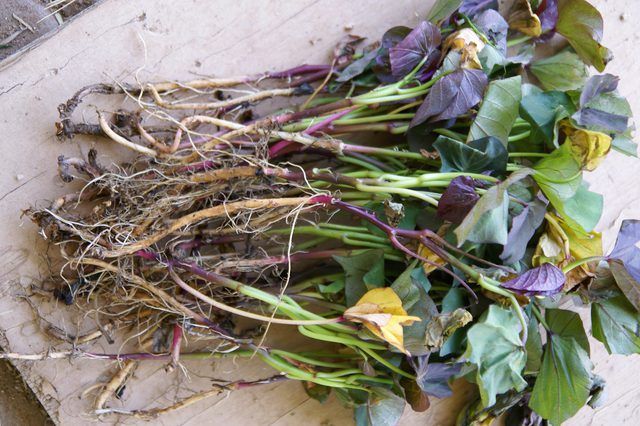
Once the outside soil temperature reaches 65 F, the slips should be planted in a full-sun site or container with well-drained, sandy-loam soil. Put on your gardening gloves and till to a depth of 6 to 8 inches and thoroughly mix the tilled soil with 2 pounds of 8-8-8 fertilizer per 25 feet of row. Plant the slips so that all but the top leaves are covered with soil and position them about 12 to 18 inches apart, allowing 3 to 4 feet between rows. Sweet potatoes grow best in raised beds, or soil that you've mounded up in the rows to create an 8-inch or taller ridge. Remove weeds from the planting site diligently until the plants' foliage shades the ground enough to suppress weed growth. If insufficient rain falls, provide at least an inch of water per week, watering to a minimum depth of 6 inches, but stop watering three to four weeks before harvest to prevent splits from forming in the roots.
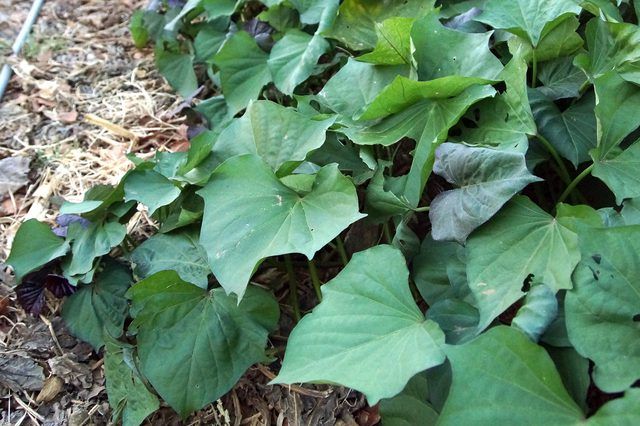
Harvest sweet potatoes in the fall when the foliage begins to turn yellow or just following the first frost. Harvesting is easier if you cut the foliage away before attempting to dig. Carefully dig the roots out of their hill with a garden fork or shovel to avoid bruising or nicking them, and spread them out on the ground to dry for two or three hours in the sun.
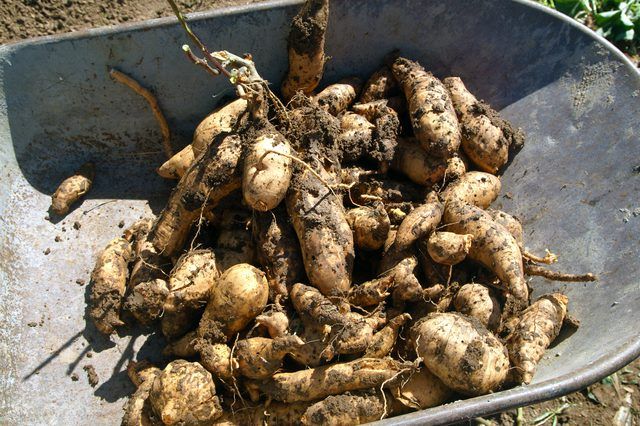
Once they're dry, one way to cure the sweet potatoes is by placing them in cardboard boxes lined with newspaper in a warm room with a temperature of around 80 F. After about two weeks, store them in a cool location at a temperature of about 55 F. When properly cured, the roots should keep in storage for three to four months, but use them as quickly as possible for the best quality..
